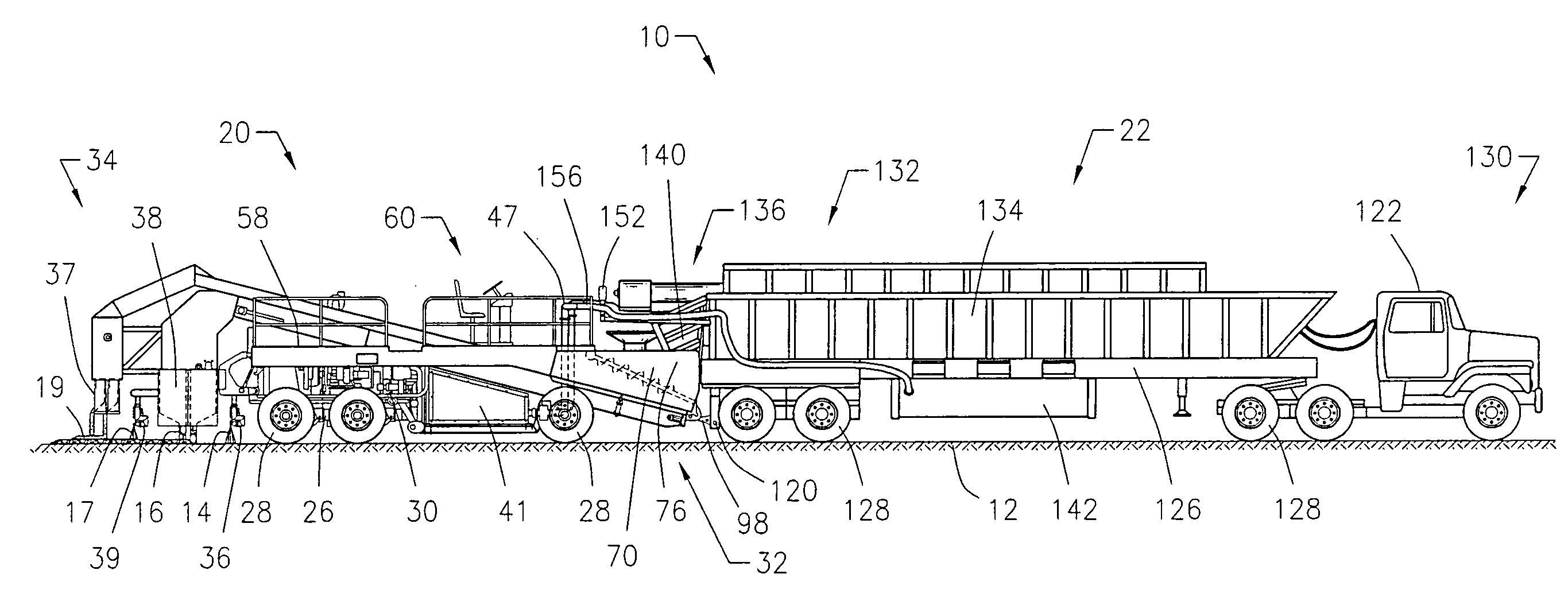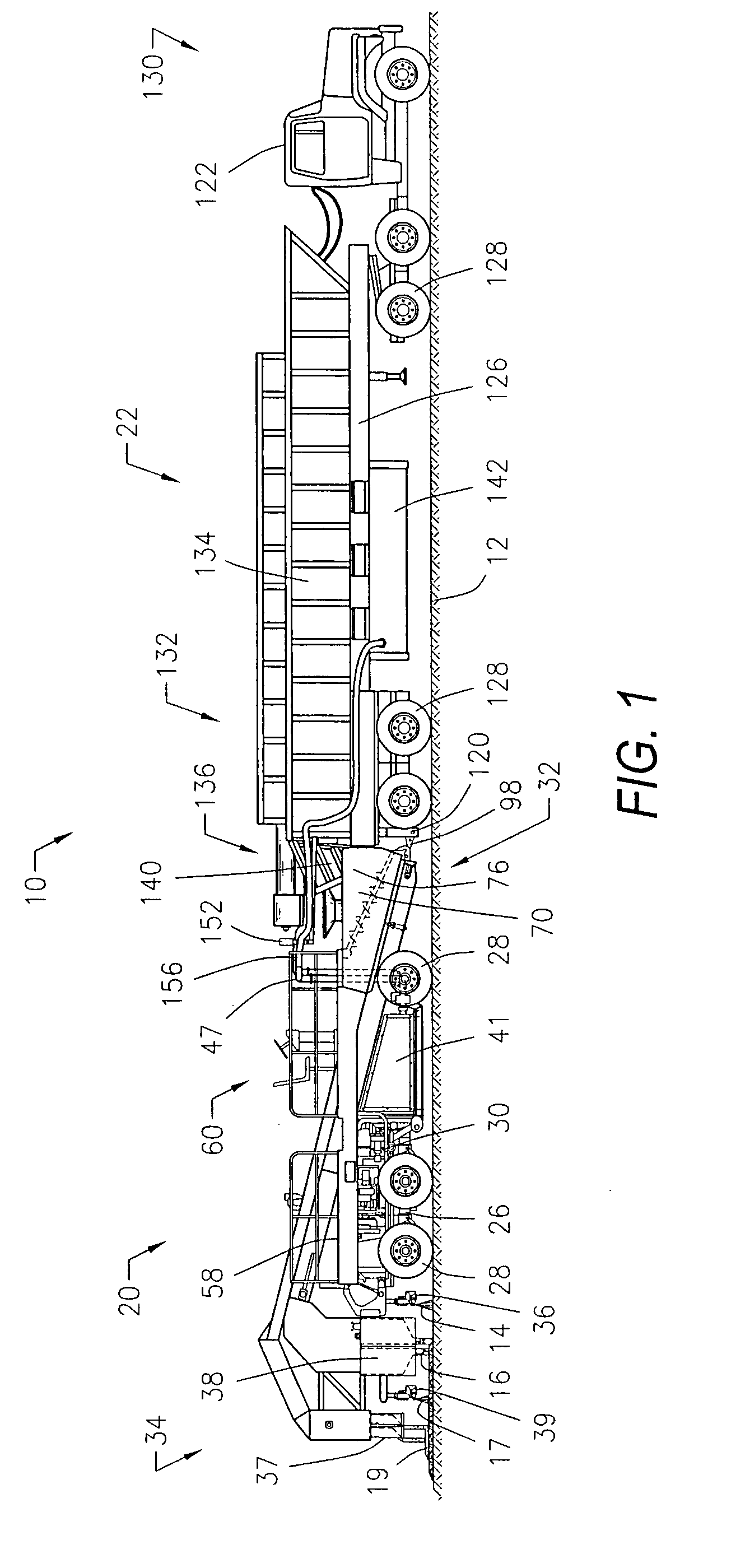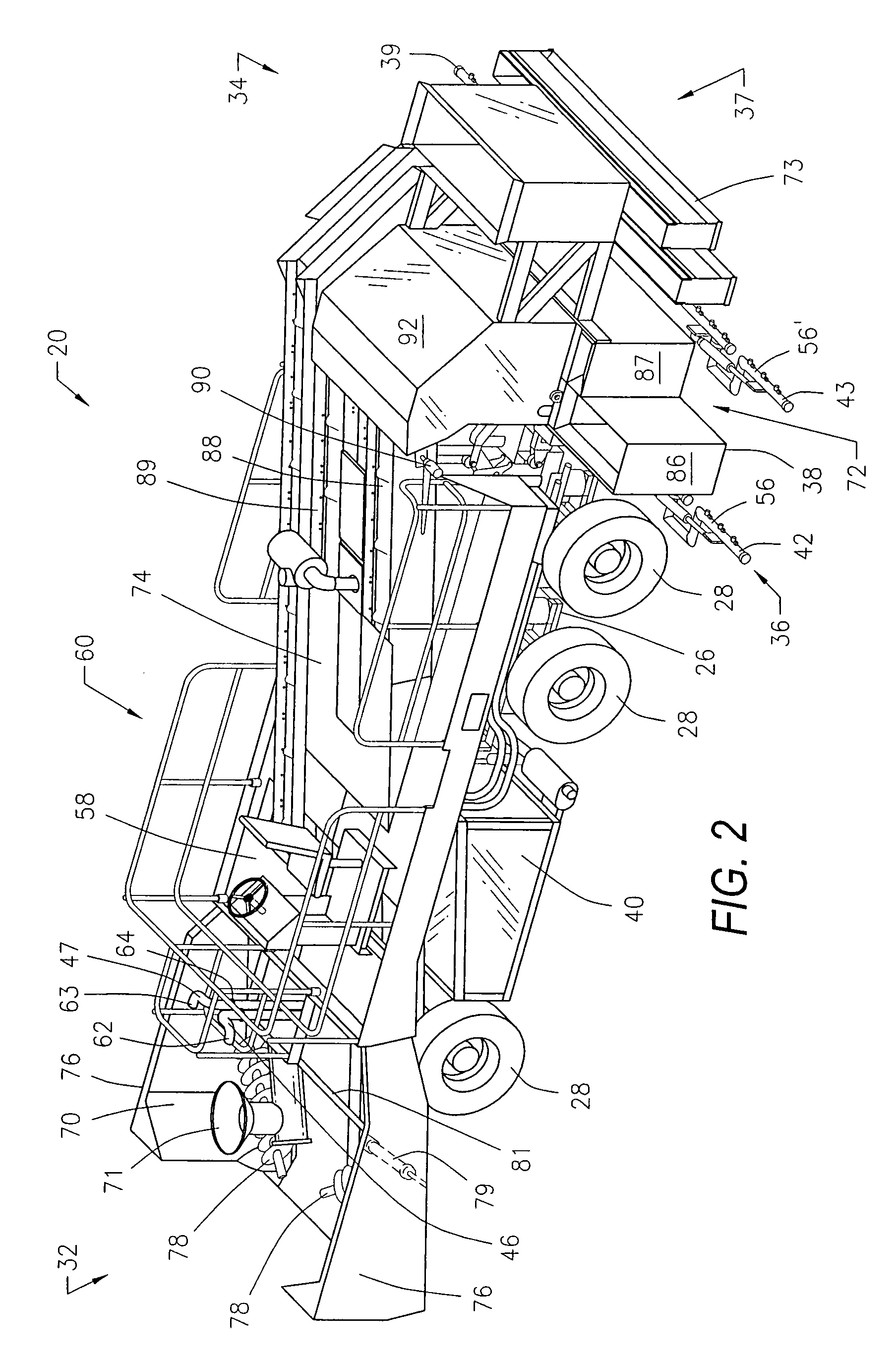Seal coat process utilizing multiple applications of asphalt binder and aggregate
a technology of asphalt binder and aggregate, applied in the field of surface treatment, can solve the problems of chipping, deterioration of asphalt concrete, and significant windshield damage, and achieve the effect of reducing the risk of deterioration
- Summary
- Abstract
- Description
- Claims
- Application Information
AI Technical Summary
Benefits of technology
Problems solved by technology
Method used
Image
Examples
Embodiment Construction
[0026]Referring now to the drawings, and initially to FIG. 1, there is illustrated an improved surface treatment for a road surface. In a preferred embodiment of the present invention, the process of applying this surface treatment includes applying a portion of asphalt binder on a surface, then applying aggregate to the binder, and then applying the remaining asphalt binder so as to substantially cover the aggregate. A finely graded material then may be placed on the second layer of binder.
[0027]The asphalt binder may be an asphalt emulsion, asphalt cutback, liquid asphalt, molten bituminous material, hot asphalt cement, or another type of binder. Preferably, the asphalt binder is prepared as an asphalt emulsion. Most preferably, it is a polymer modified asphalt emulsion. Typically chipseal grade binders may be used, or alternatively, higher needle penetration asphalts may be used. Preferably, the binder can be an asphalt emulsion. More preferable, the asphalt emulsion is prepared ...
PUM
| Property | Measurement | Unit |
|---|---|---|
| distance | aaaaa | aaaaa |
| distance | aaaaa | aaaaa |
| speed | aaaaa | aaaaa |
Abstract
Description
Claims
Application Information
 Login to View More
Login to View More - R&D
- Intellectual Property
- Life Sciences
- Materials
- Tech Scout
- Unparalleled Data Quality
- Higher Quality Content
- 60% Fewer Hallucinations
Browse by: Latest US Patents, China's latest patents, Technical Efficacy Thesaurus, Application Domain, Technology Topic, Popular Technical Reports.
© 2025 PatSnap. All rights reserved.Legal|Privacy policy|Modern Slavery Act Transparency Statement|Sitemap|About US| Contact US: help@patsnap.com



